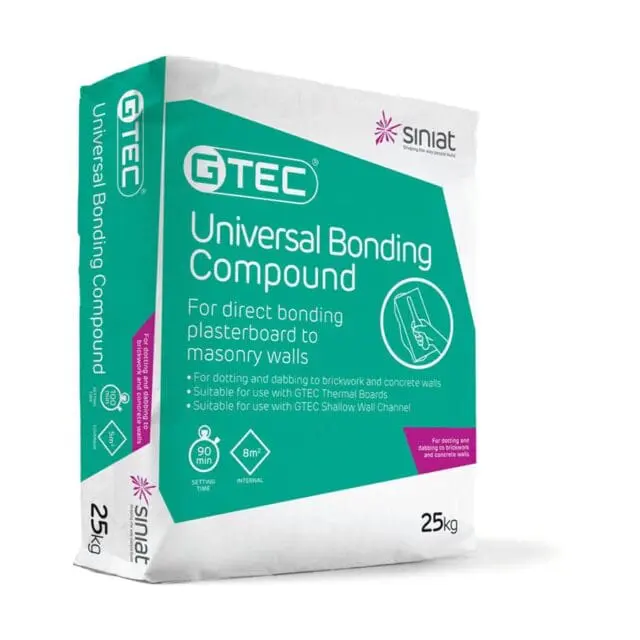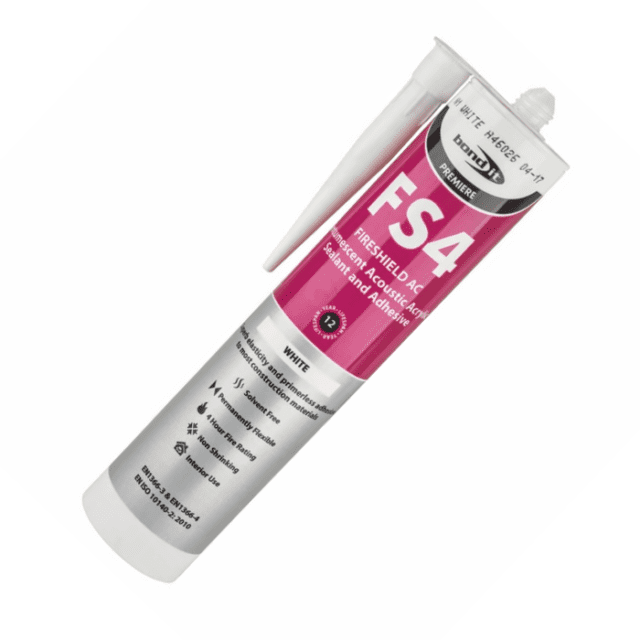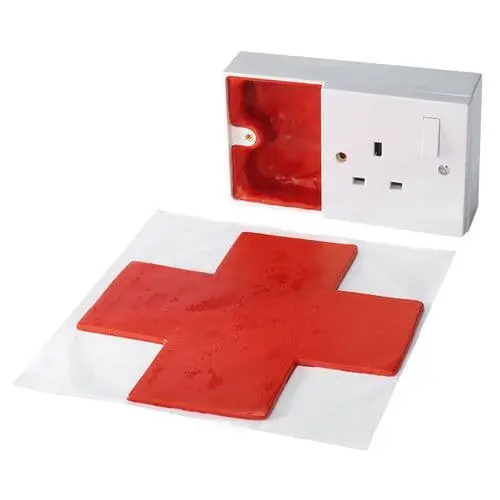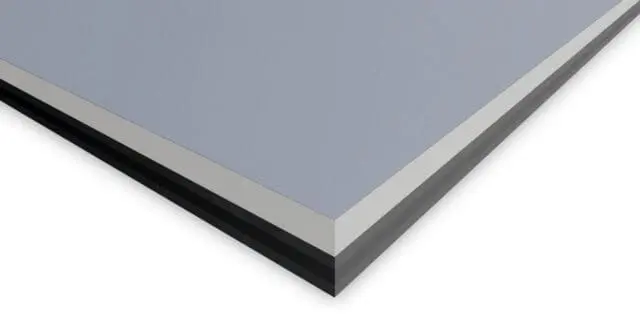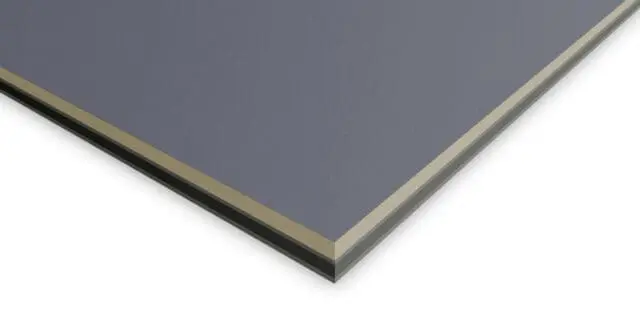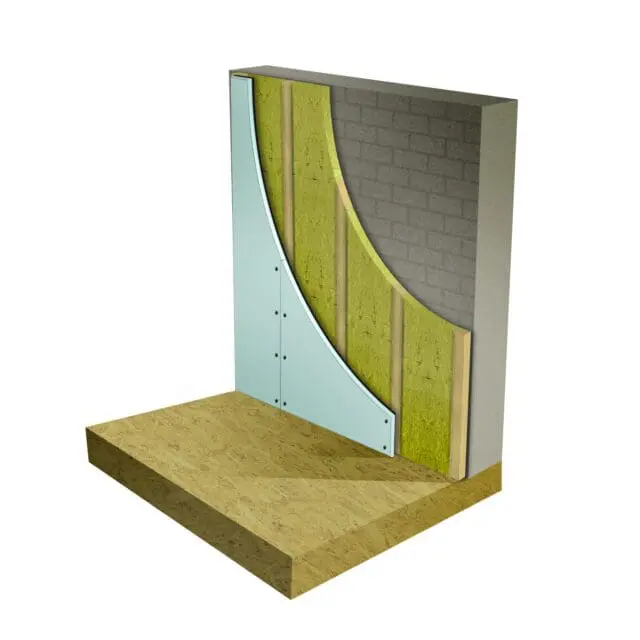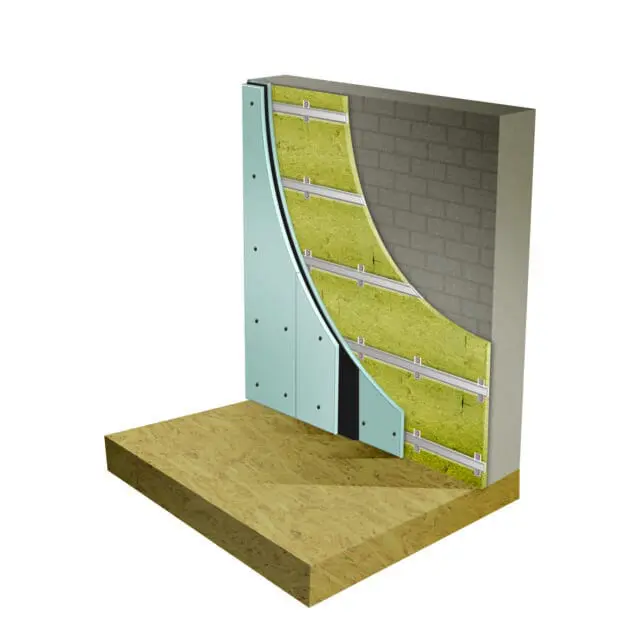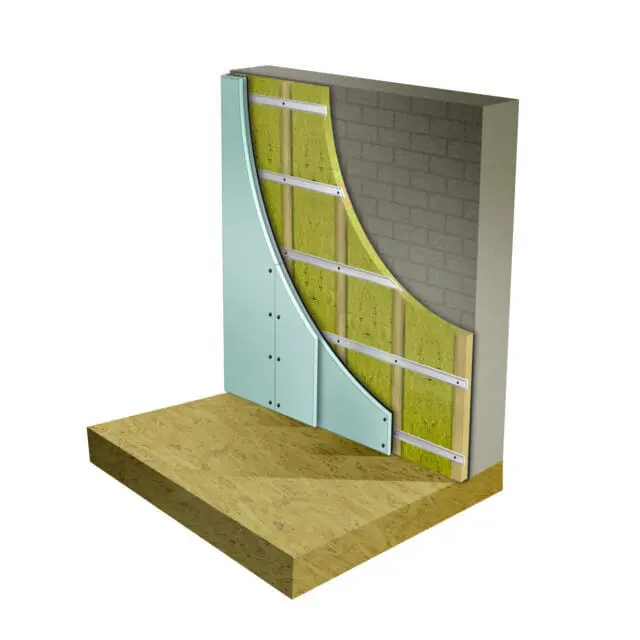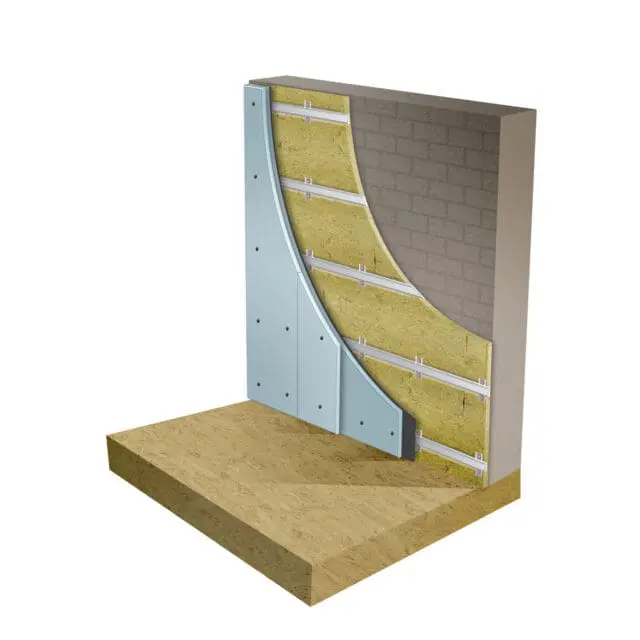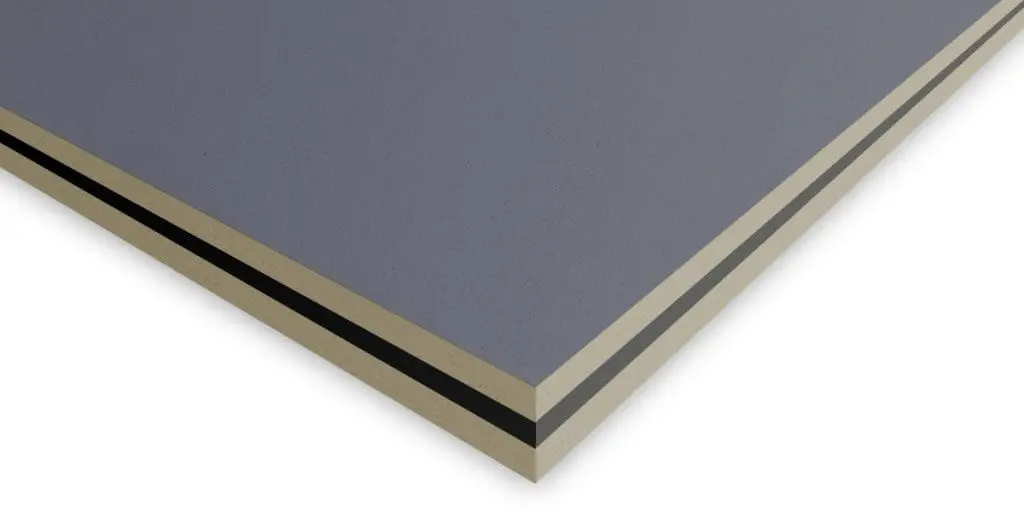
Noisestop 2 Panel 28mm | Stick-On Soundproofing
£32.45 ex. VAT
In stock, ready to ship
Estimated Delivery: 3 - 5 Days
(4th Jul - 6th Jul)
The Noisestop 2 Panel combines acoustic plasterboard with a tapered edge and a 5kg mass-loaded vinyl membrane centre, significantly enhancing sound insulation.
It is the only soundproof panel that can be applied directly using plasterboard adhesive, making it ideal for levelling an uneven wall. Increase the sound insulation of brick party walls with this DIY friendly stick on soundproofing panel. Block unwanted airborne noise transferring through low mass walls with the Noisestop 2 Panel.
- Soundproofing: Party walls and stud walls
- Noise type: Airborne noise (TV, radio, conversation lower-medium noise levels)
- Noise reduction: 46dB
- Size: 28mm x 1200mm x 1200mm tapered edge (1.44sqm)
- Cost: £22.53sqm
- Installation: DIY friendly
- Fixing method: Adhesive, hammer fixings, drywall screws
- Finishing options: Plastering, tape and fill, paint or wallpaper
Noisestop 2 Panel – Triple Layered Soundproofing for Party Walls and Stud Walls
Are you struggling with noise from next door? The Noisestop 2 Panel is the perfect solution to help you enjoy a quieter, more peaceful home. Designed especially for soundproofing party walls and stud walls, this stick-on soundproofing panel reduces noise without requiring major building work.
The Noisestop 2 Panel features a triple-layered design, combining dense acoustic plasterboard with a mass-loaded vinyl core. This clever construction helps block out airborne noise like voices, TVs, and music, making it ideal for anyone wanting to soundproof against noisy neighbours.
Quick and simple to install, the panels can be applied directly to walls using adhesives, saving you time and hassle compared to traditional framing or building methods.
Why Choose the Noisestop 2 Panel
-
Reduces airborne noise for a quieter living space
-
Triple-layered for extra sound insulation
-
Perfect for party walls and stud wall upgrades
-
Slim design to preserve valuable room space
-
Easy installation with adhesives – no need for major construction work
Create a calm, comfortable environment at home with the Noisestop 2 Panel – a fast, effective way to bring peace and quiet back into your life.

The Noisestop 2 Panel comprises the following materials:
- Acoustic Plasterboard 12.5mm – Heavier than standard plasterboard, which adds density to the area. The plasterboard is finished in the same way as standard plasterboard.
- 2.5mm Mass-loaded vinyl 5kg/m² – High mass barrier layer for sound absorption.
- Acoustic Plasterboard 12.5mm – Heavier than standard plasterboard, which adds density to the area. The plasterboard is finished in the same way as standard plasterboard.
- System thickness: 28mm
- Size: 1200mm x 1200mm (1.44sqm)
- Noise reduction: 46dB
- Thickness: 28mm
- Weight: 42kg per sheet
- Fire: One hour
Thermal Resistance R:
- Acoustic plasterboard 12.5 mm = 0.050 m2 K/W
- Mass-loaded vinyl 0.14 m² K/W
Thermal Conductivity λR:
- Acoustic plasterboard 0.25 W/mK to BS EN 12524:2000
- Mass-loaded vinyl 0.037 W/mK
Reaction to Fire
- Acoustic plasterboard 12.5mm Euroclass A2-s1, d0
- Mas-loaded vinyl 10kg EN 13501-1 B-s2,d0 (2)
Untreated brick wall DnT,w
Single skin 100mm brick wall 38db
Treated brick wall DnT,w
Noisestop 2 Panel applied 46dB
Improvement DnT,w
Noise reduction with treatment 8dB
Note: Every 10 decibels(dB) reduction in noise level is roughly perceived as a halving of the perceived loudness. So, for instance, if you have a sound that measures 70dB and it decreases to 60dB, it would sound about half as loud to the human ear.
- Preparation:
- Ensure the wall surface is clean, dry, and debris-free.
- Ensure the surface is in good condition, performing any necessary remedial work to ensure the wall is flat and secure.
- Remove skirting boards and coving, and extend electrical outlets. Remove thick plastic wall coverings.
- Panel Application:
- Wall Types: Apply the panels to brick, breeze block and plastered walls using the plasterboard adhesive. When applying to stud frames, use drywall screws to attach.
- Adhesive Application: Apply plasterboard adhesive to the wall or the back of the Noisestop 2 Panel.
- Panel Positioning: Press the panel firmly onto the wall; either face of the board can face into the room.
- Cutting Panels: Use a hand saw or circular saw to cut the panels to size as needed.
- Sealing: Use acoustic sealant between each panel as you position them together. Leave a 2-3mm gap around the wall’s perimeter to reduce flanking sound transmission, filling this gap with acoustic sealant.
- Finishing Touches:
- Surface Finish: Skim plaster or tape and fill the tapered edge of the panels.
- Reinstating Features: Reinstall skirting boards and coving and, if needed, extend and fit electrical outlets using acoustic putty pads inside recessed back boxes.
Alternative Applications:
- Stud Frames, Furring Channels, and Soundbreaker Bars: The Noisestop 2 Panel can also be screwed directly onto stud frames, furring channels, and soundbreaker bars as part of a comprehensive soundproofing system for walls and ceilings.
Due to the nature of most of the materials we supply, orders are typically delivered on pallets.
All orders will be wrapped, protected, and secured to the pallet to ensure they arrive in the best possible condition. Goods will be delivered as near to the property as possible. The drivers will not be able to carry orders into your property.
Deliveries are made between 8am and 6pm, Monday to Friday.
Once an order has been placed, you will be notified of the expected delivery date. Please ensure someone is available to sign for the delivery.
We charge a flat delivery rate of £60 plus VAT for palletised deliveries. We do not charge per pallet, no matter how many pallets are used to deliver your order.
Orders placed for items weighing less than 20kg will be sent via courier for £20 plus VAT.
We have a high stock level and typically deliver orders in approximately three to four working days.
If you want to speak to us regarding your delivery, please call 01423 339163.
Please check out our full delivery terms for more details.
Alternative solutions
Alternative solutions that will offer different levels of soundproofing or another kind of installation method that might suit your requirements.
Soundproof panels FAQS
Soundproof panels are specialised acoustic panels designed to reduce sound transmission between spaces. They are typically made of dense, sound-absorbing materials such as soundproof plasterboard, mass-loaded vinyl and acoustic foams, which help to block and absorb sound waves.
No. Soundproof panels significantly reduce sound transmission, but achieving higher levels of soundproofing requires combining various methods and materials (such as sound isolation clips, resilient channels and acoustic insulation). See our Soundproofing Systems for more information when higher levels of sound insulation are required.
Yes, many soundproof panels are designed for easy DIY installation. They are typically installed with screws or adhesives depending on the type of panel and the surface they are being applied. Products frequently used with soundproof panels include the following.
- Acoustic sealants – seal the edges and the perimeter of the wall to keep the area airtight.
- Hammer fixings – Secure sound panels to most solid walls using a hammer fixing. Other fixings, such as drywall screws, are used for different backgrounds, such as stud work or metal furring channels.
Most soundproof panels have an outer face of plasterboard, which allows for finishing, such as a plaster skim like a standard plasterboard. Our soundproofing boards have a tapered edge that enables them to be taped and filled as an alternative to plastering. Decorating straight onto the panel’s surface with paint or wallpaper is possible.
Once the soundproofing has been installed, the electrical outlets can be reinstated. To ensure acoustic integrity, we recommend using an acoustic putty pad inside the electrical back box.
You can attach things such as shelves and mirrors over soundproof panels. If the wall behind the panel is a solid wall, use a suitable fixing that connects to the wall behind the panel; if it’s a stud wall, use a suitable stud wall plug.
Got a question?
Send us a message, and we’ll respond as soon as possible. Alternatively, call 01423 339163 to speak with an adviser.

